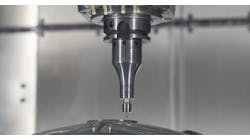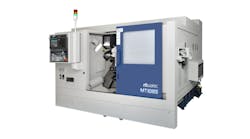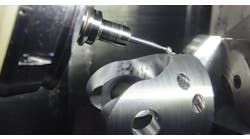The electronics industry is trending toward the microscale. Consumer devices keep getting smaller, and increasingly popular medical applications require tiny form factors. Addressing those developments means that manufacturers must adopt new types of microfabrication techniques.
Microfabrication is not necessarily new, but it is evolving significantly. These small-scale production techniques will change and their applications will expand further as microelectronics dominate more of the industry. Electronics manufacturers must take note of this trend to keep up with the rest of the sector.
Types of microfabrication
Manufacturers can meet growing microelectronics demands in an ever-increasing number of ways. Here are some of the most common types of microfabrication methods to consider.
Photolithography. Photolithography is the most common microfabrication technique today, largely because it’s among the longest-standing ones. This process involves coating a surface — typically a semiconductor wafer — in a light-sensitive material called a photoresist, then exposing the surface to ultraviolet light to etch photoresist-covered areas.
Some lithographic techniques can achieve resolutions of less than 5 nanometers, making them more than capable of microscale etching. Using light instead of physical contact also removes concerns over vibrations or friction, which conventional machining entails. Consequently, this method is far safer when working with thin, sensitive components.
Laser micromachining. While physical machining may be too abrasive for microfabrication, lasers offer a more controllable alternative. Laser micromachining works almost identically to conventional subtractive methods but replaces physical cutting tools with high-precision lasers. As a result, manufacturers can etch, carve, or cut components without damaging the material.
Like photolithography, laser micromachining achieves precision within a fraction of a micron. Also, manufacturers can adjust the power and pulse rate of the laser to work with different materials while accounting for temperature-related concerns.
3D printing. Both photolithography and laser micromachining are subtractive techniques. Some manufacturers have started opting for additive types of microfabrication instead through various 3D printing methods. This is the newest development of the three major techniques, as 3D printing methods were not sufficiently precise enough for microfabrication, until relatively recently.
The chief advantage of 3D printing is that it is an additive process – it minimizes waste because it does not create any of it. It’s also efficient, especially at the microscale where cure times are almost instantaneous. As a result, novel 3D printing methods can boost throughput by up to 60 times in some situations.
New microfabrication techniques
While each type of microfabrication has unique advantages and disadvantages, all these innovations offer significant improvements over more conventional alternatives. These benefits will ripple across the electronics industry as microfabrication grows.
More precision. The most obvious advantage of microfabrication techniques is that they’re more precise than traditional machining. They can cut designs smaller than what’s visible to the human eye. This precision has two major implications for electronics manufacturing.
First, smaller cuts mean manufacturers can produce electronics in smaller form factors. Compact components leave more room for cooling systems or added functionality within a device. Alternatively, it makes wearable or implantable electronics more practical. It also minimizes errors, ensuring a more efficient and less wasteful manufacturing process.
Improved device functionality. Employing microfabrication techniques also lets manufacturers produce higher-functioning electronics. Many microscale production methods introduce performance benefits, even if that’s not their primary goal. For example, flip chips have better thermal conductivity and moisture resistance on top of being smaller than wire-bonding ball grid arrays.
Benefits like these are most noticeable in printed circuit boards (PCBs). 3D printing can produce thinner traces than subtractive methods. Manufacturers can use that advantage to produce smaller-overall PCBs or increase component density without introducing signal interference concerns, as there’s still sufficient relative space between traces.
Higher efficiency. Many of these techniques are also more efficient. This productivity stems mainly from error reduction, though it’s worth considering how all major microfabrication methods are largely automated and require minimal post-processing. As a result, manufacturers can scale microelectronics production without significant infrastructure upgrades.
Some manufacturers have produced as many as 60,000 components within eight hours through 3D printing. Efficiency improvements also come in the form of energy savings. Even without significant time reductions, microfabrication requires less power than larger-scale production, so making the same number of components uses less energy. These savings reduce expenses and emissions.
Greater material diversity. Various microfabrication techniques also allow manufacturers to use novel materials that they may be unable to work with otherwise. Some polymers or nanomaterials may be too sensitive for physical machining. Using photolithography or lasers instead makes these more delicate options viable.
A more diverse material selection opens the door to cost reductions or improved device performance. Some materials take on new qualities on the microscale, too. For example, graphene is 200 times stronger than steel and conducts electricity better than copper. Microfabrication lets manufacturers capitalize on that potential.
Microfabrication is the future
Microfabrication techniques are advancing as quickly as microelectronics themselves. As they advance, electronics manufacturing industry can become more efficient, reliable, and sustainable and meet a wider range of niche requirements.
The benefits of microfabrication are too substantial to ignore. Attention to these methods and their impact is crucial for ongoing success in the electronics sector.
Emily Newton is the Editor-in-Chief of Revolutionized, an online magazine exploring the latest industrial innovations.






